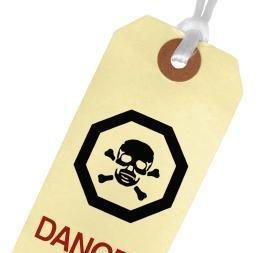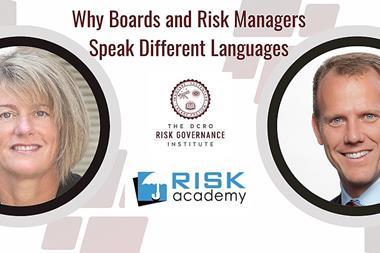An interview with Dr Annabelle R Hett, former head of emerging risk management, Swiss Reinsurance Company
How would you define emerging risks?
At Swiss Re, we define these as developing or changing risks which are difficult to quantify and may have a major impact on our book of business. Emerging risks also have some particular characteristics, which include novelty or change, high uncertainty, insurance and risk capital relevance, and the potential for long-term exposure.
What key risks do you see on the horizon?
The answer to this question can vary, depending on the companies you ask, as well as on their book of business and the level of risk. At Swiss Re, we differentiate between emerging risks that are relevant on a group level and emerging risks that primarily affect a specific business unit. Our broader landscape currently includes more than 100 distinct risks. Some of the key ones are electromagnetic fields, nanotechnology, pollution, the effects of climate change and pervasive computing.
I’d like to emphasise that these emerging risks are not just selected for their potential downside but also to explore potential business opportunities. There are often two sides to the coin – on the one hand risk management measures which help to protect the balance sheet and on the other hand opportunities that new risks can present. The latter may lead to new products for our clients.
What can risk managers do to manage emerging risks?
“At Swiss Re, we differentiate between emerging risks that are relevant on a group level and emerging risks that primarily affect a specific business unit. Our broader landscape currently includes more than 100 distinct risks. Some of the key ones are electromagnetic fields, nanotechnology, pollution, the effects of climate change and pervasive computing.
Dr Annabelle R Hett, former head of emerging risk management,Swiss Reinsurance Company
At Swiss Re we have a model that defines three levels of intervention. At the first level, we work to raise awareness and influence the business environment – primarily through risk communication. As a second level, we apply underwriting best practice, such as individual risk assessments and the limitation of exposure through wordings. Our third level consists of underwriting rules and model adjustments. This may result in exclusions, although these are only adopted as a last resort.
At the same time, we go beyond risk mitigation measures and strive to develop new products that capture changing market needs. Here, emerging risks present some particular challenges for insurers and reinsurers.
The perception of what constitutes a threat or an opportunity can differ among insurers and their clients. Also, it is difficult to charge a premium for risks that have not yet materialised and therefore have no loss history.
Finally, emerging risks are not easy to quantify and are often not suitable for traditional risk transfer. The insurance industry has recognised that such risks require customised solutions. As changes in the risk landscape are accelerating, the industry will increasingly adopt an anticipatory approach to managing emerging risks. Identifying new risks, raising awareness for them, creating relevant scenarios and estimating their potential impact on a company’s book of business at a very early stage is crucial. As a consequence, Swiss Re has developed a process to ensure the systematic detection and analysis of emerging risks, as well as the translation of group-relevant findings into our business activities. On an industry level, the Geneva Association’s CRO Forum launched an emerging risk initiative in 2005, in which leading insurance and reinsurance companies work together on identifying and understanding the technical aspects of such risks. Based on the findings, the companies then go on to implement their own individual solutions.
Dr Hett was one of the speakers at yesterday’s workshop on ‘Emerging risks and insurability’. From 1 September she took on a new role as head, Swiss Re Centre for Global Dialogue



















No comments yet